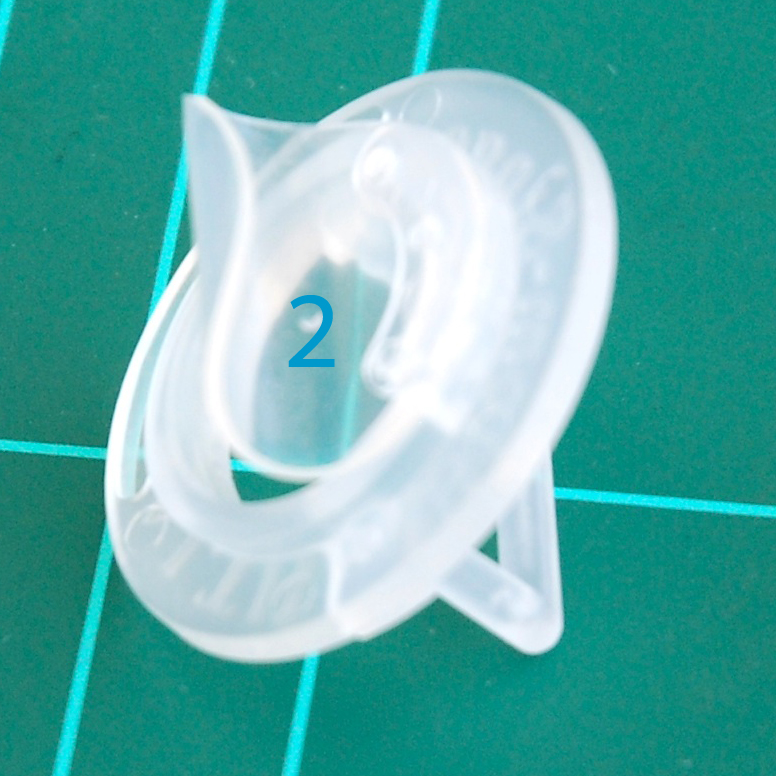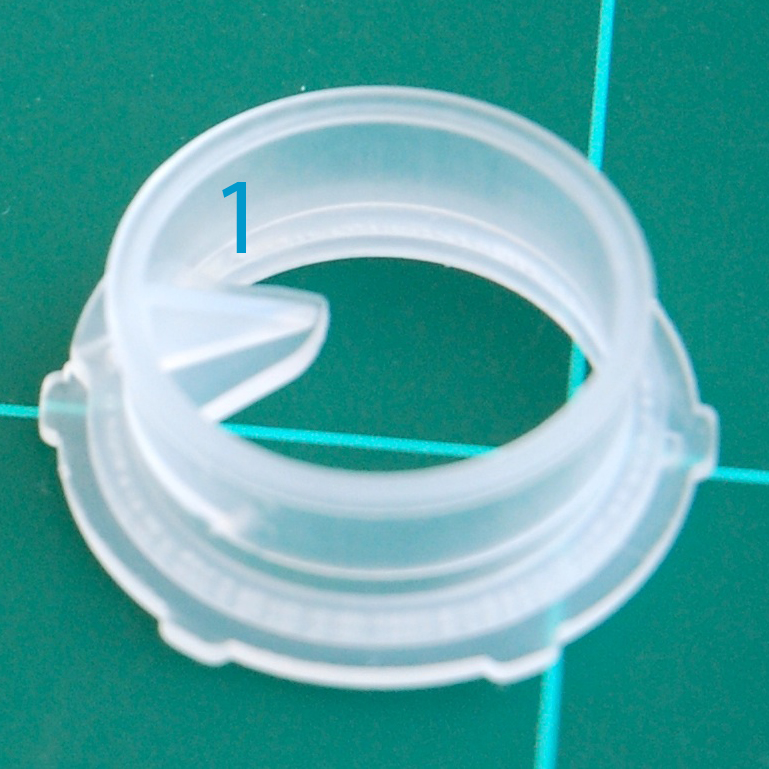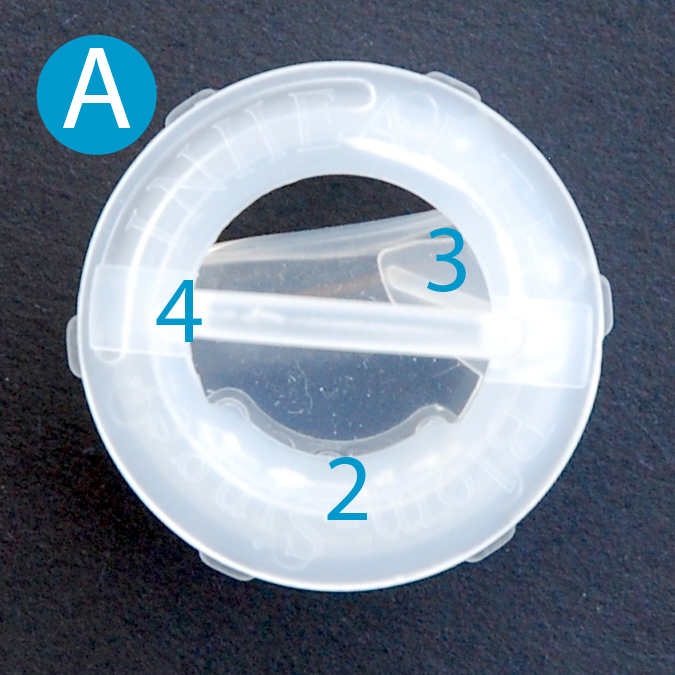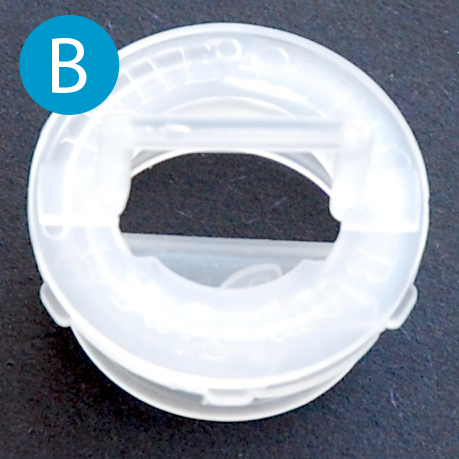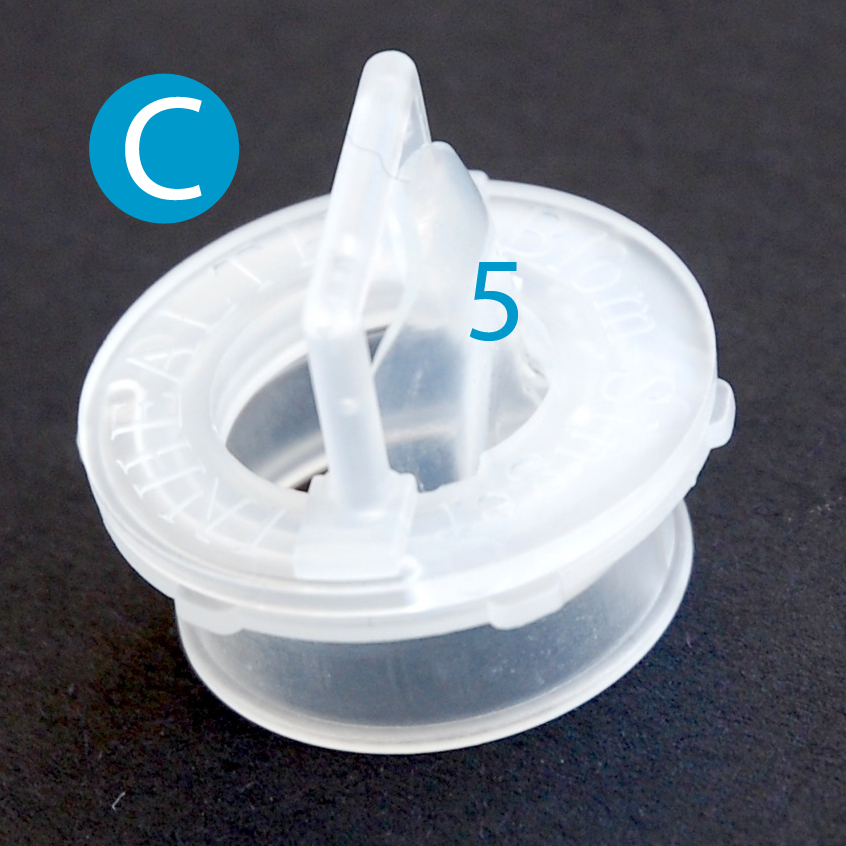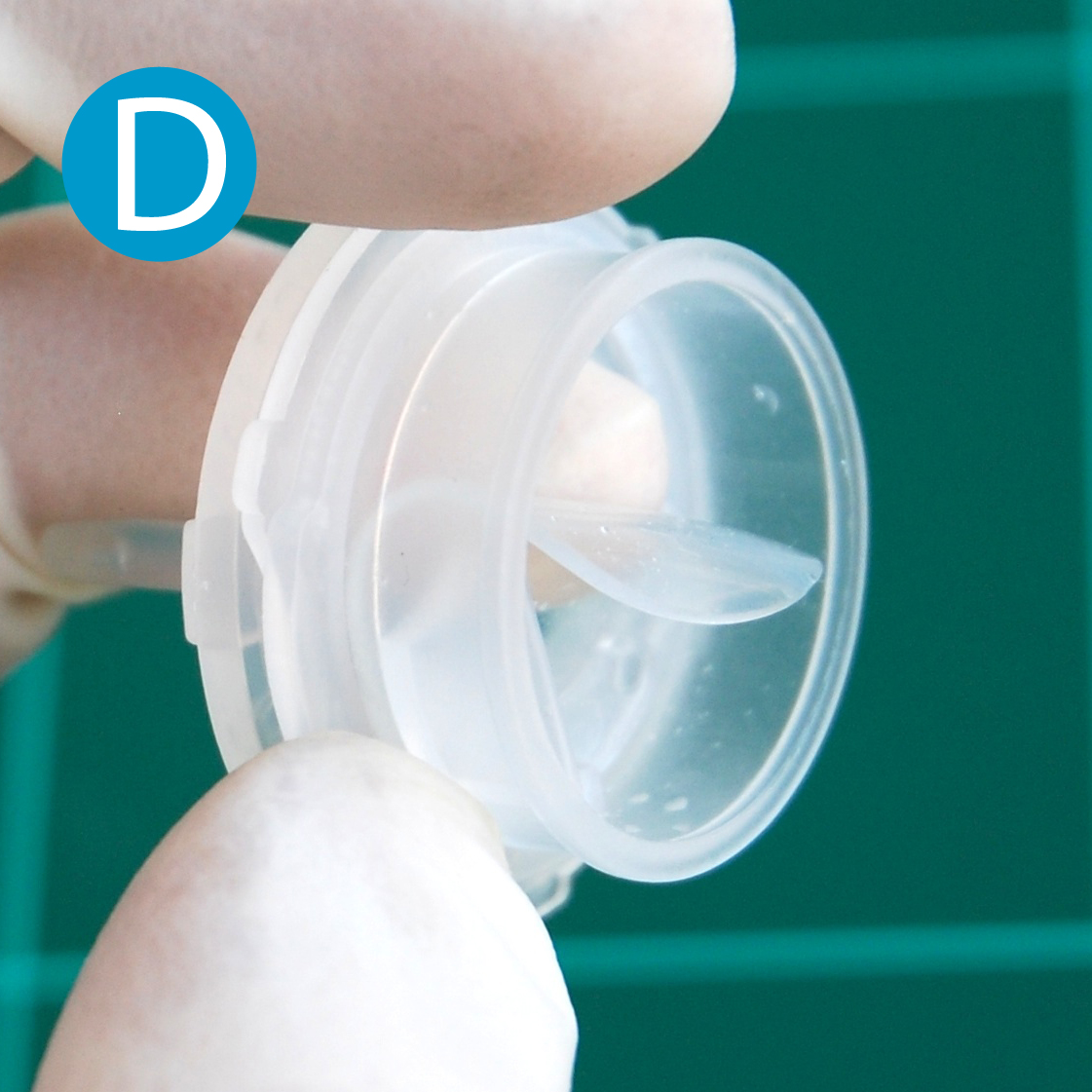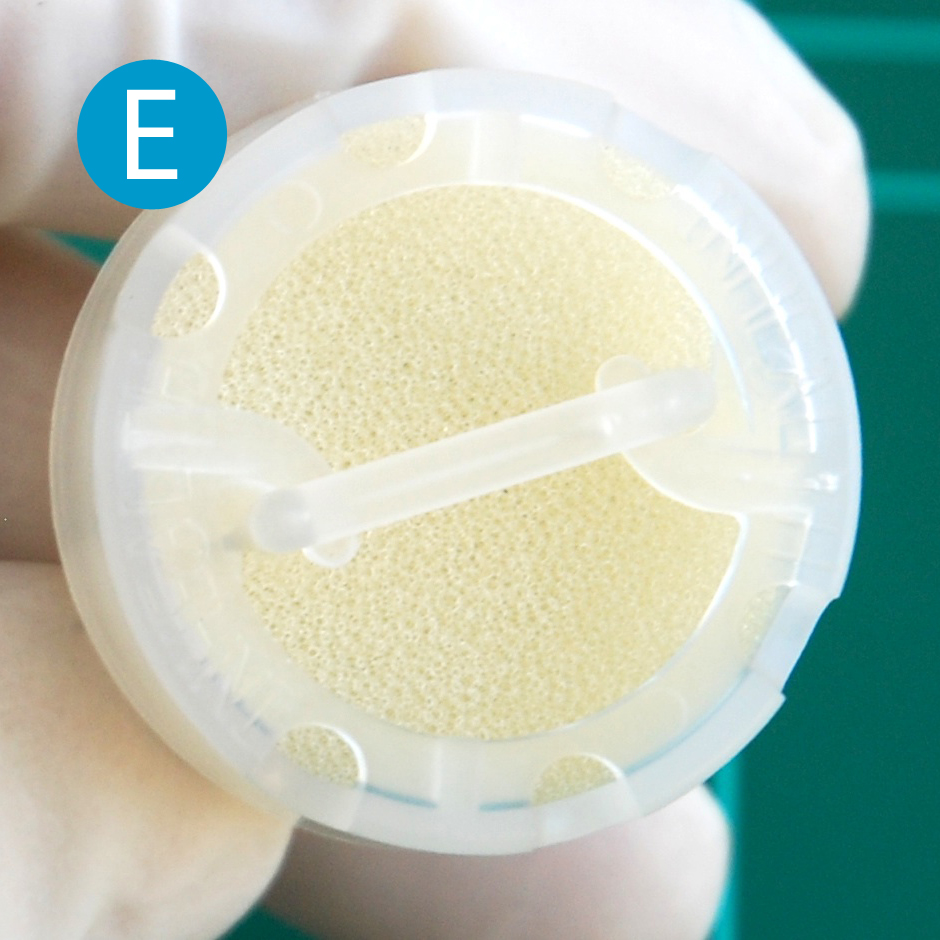Blom-Singer® Adjustable Tracheostoma Valve II (ATSV II)
The Blom-Singer® ATSV II (Adjustable Tracheostomavalve II) is very easy to put together. It is placed on the 22-mm connector of a tracheostoma plaster on a tracheostomy tube or tracheostoma button. The ATSV II consists of two parts, the housing (1) and a front panel (2) with the valve membrane (3), which are slotted together. The opening angle of the valve membrane is adjusted by turning the front panel on the appropriate bar (4). Fig. A shows the valve membrane in the maximum closed position, in which the valve closes very easily for speaking. If the valve is to close less readily as the patient’s breathing increases, for instance if he is performing a strenuous physical activity, then the opening angle of the valve membrane is increased by turning the bar. Fig. B shows the ATSV II with the maximum opening angle of the valve membrane. The valve membrane is also the coughing flap of the ATSV II. When coughing, the soft silicone valve membrane is coughed outwards by the valve (5) as shown in fig. C. The valve will no longer work in this situation. The membrane must first be pushed back into the valve (ideally with a little finger; fig. D) before it will work again.
The HME (HumidiFilter Foam) is placed on the tracheostoma valve in a separate housing (HumidiFilter Cap) and hooked into place (fig. E).
Advantages of the ATSV II:
- The HME is positioned on the valve when in use, which prevents it from quickly being coughed full of phlegm.
- The comparatively low price
- Long lifespan
- Can be used on any plasters, cannulas and tracheostoma buttons with a 22-mm connector
Disadvantages of the ATSV II:
- The HME is positioned on the valve, which means that the HME has to be removed if the valve membrane is coughed out and needs to be replaced manually.
- The need to push the valve membrane back manually after coughing
- The closing strength of the coughing valve cannot be adjusted

